Ditch That Slant Six: Dodge Hellcat Powerplant Is Now Available as a Crate Engine
This should lead to more than a few odd pairings. Mopar, Fiat Chrysler Automobiles’ performance and aftermarket parts division, will now offer a Dodge SRT Hellcat engine — the company’s 707 horsepower, supercharged 6.2-liter V8 — minus the car.
Dubbed the “Hellcrate,” the warranty-backed engine and associated kit was unveiled Monday ahead of this week’s SEMA show in Las Vegas. This means Mopar fans looking to own a 707-hp beast have other options than just visiting an FCA dealer and signing on the dotted line for a new vehicle.
Volume Booster: Toyota's RAV4 Hybrid Gets a Price Haircut
Even though it represents a small slice of the model’s overall volume, Toyota owes a lot to the hybrid version of its top-selling RAV4 compact crossover. Without it, the RAV4 wouldn’t actually be the United States’ top-selling compact crossover.
Through the end of September, Toyota sold 36,352 hybrid variants, pushing the RAV4 nameplate ahead of the Nissan Rogue/Rogue Sport family. Sales of the hybrid model are up 10 percent this year. Realizing it has a good thing on its hands, Toyota seems eager to get more RAV4 Hybrids into the hands of green-car shoppers looking for more room to go with their fuel economy.
The automaker is now planning a new entry-level trim for the 2018 RAV4 Hybrid.
The Rotary's Returning, Says Mazda, But There's Some Things to Take Care of First
For five years now, Mazda has hinted, then promised, then reassured us that a rotary-powered sports car will return to the company’s lineup, ready to fill a spot left vacant by the departing RX-8 in 2012.
We’re still waiting and, Mazda now informs us, we’ll be waiting quite a bit longer. While the cylinderless gasoline engine holds promise as a range-extender in electrified vehicles (something powertrain chief Mitsuo Hitomi feels is a definite future use for the powerplant), that’s not something Wankel fans want to hear. They want to spin that engine up to eleventy billion rpm and drop the clutch.
It’ll happen, says Mazda’s senior managing executive officer, Kiyoshi Fujiwara, but something’s cropped up that pushed the rotary’s return to the back burner. That thing is the company’s gasoline compression ignition engine, the Skyactiv-X.
2017 Toyota Prius Prime Advanced Review - All Charged Up
Like it or not, bias is always going to be a concern whenever consuming any sort of media. Efforts can be made to present fair and balanced reporting on any issue, but the problem is, quite simply, that news organizations are made up of people who hold their own opinions. The best way the reader/listener/viewer can navigate the bias is to know what those biases are, and account for them.
Let me be clear – I’m biased against the Prius. Nearly two decades of negative reinforcement about the Prius and Prius drivers have hardened a dislike of the little wedge that promises nothing but slow driving in the left lane. Minimal performance and a focus on fuel economy above nearly all else is foreign to those of us who truly enjoy driving.
Thus, I dreaded the arrival of this 2017 Toyota Prius Prime to my driveway, worrying that I might doze off from sheer boredom during my commute. When I saw the white paint applied to the vehicle’s sharply-angled flanks, I was further concerned about the appliance-like nature of this plug-in people hauler.
2017 Volkswagen Beetle Dune Review - A Bug, Not a Buggy
It’s clear what Volkswagen is trying to do with the Dune trim level of its Beetle two-door.
The company claims the Dune is inspired by classic Beetles that were modified into “dune buggies.” Which is fine, but all it really is is a current Beetle with a raised suspension, black exterior cladding, rear spoiler, bumpers unique to its trim, unique air intakes, 18-inch wheels, LED taillights, special interior stitching, and cloth/leatherette seats.
Other than that, little sets it apart from its Beetle brethren. It’s powered by the same 1.8-liter turbocharged four-cylinder found in most Beetles (the R-Line has a 2.0-liter turbo four-cylinder) and mates to a six-speed automatic transmission.
A small, relatively lightweight (it’s still a tick over 3,000 pounds) compact coupe like the Beetle should be fun to drive, even if it’s raised, like the Dune is. But “should be” and “is” are two different things.
As Chrysler Fades Away on the Global Stage, Right-hand-drive 300s Remain in Production
On the surface, Fiat Chrysler Automobiles’ Jeep brand is everything a modern-day brand should be. SUVs and crossovers, a looming pickup truck, and no cars. This is what the world wants.
On the opposite side of the coin, Chrysler is the brand seemingly no one, save for North American minivan buyers and a shrinking pool of traditional luxury sedan devotees, wants. Year-to-date, sales of the brand’s two-model U.S. lineup is down nearly 10 percent.
Overseas reports claiming FCA has ended production of right-hand-drive models at its Ontario, Canada assembly plants paint an even grimmer picture, even though the core RHD Chrysler model — the rear-drive 300 — is not, apparently, extinct.
2018 Honda Fit LX Review - What If It's the Only Subcompact for You?
Subcompacts, if they ever were in favor, have quickly fallen out of favor in the United States. In 2017, sales in the first three-quarters of the year plunged by more than a fifth, year-over-year. The Honda Fit, modestly updated for the 2018 model year, is on track in 2017 to fall to a five-year low of around 50,000 sales, a far cry from the nearly 80,000 American Honda sold a decade ago.
The Honda Fit, not now in third-gen form nor in any prior iteration, has never sold on the strength of style. There have always been less expensive subcompacts, faster subcompacts, and better-equipped subcompacts, as well.
There have not, however, at least not during the Fit’s tenure, been any subcompacts that offer the flexibility of the Honda Fit. But does the fact that the 2018 Honda Fit is likely the only current subcompact that could operate as my family’s lone vehicle make up for the fact that the Fit lags behind rivals in key areas?
It's a Sign: TTAC Finds Official NHTSA 2018 Mazda CX-5 Diesel Filing
Mazda announced 11 months ago that the company “will introduce a diesel engine option to the North American market,” with the revamped CX-5, launched in the 2017 model year.
We’d heard such claims before. Three years ago, we were still waiting on the launch of the diesel-powered Mazda 6, at least until Mazda gave up on that idea. But Mazda’s insistence this time around produced less doubt. Mazda even revealed that the automaker felt it could generate 10 percent of CX-5 sales with the diesel model.
But last month, we began to wonder about Mazda’s claims of delivering a 2017 Mazda CX-5 Diesel in the second-half of 2017. The second-half, as you may have noticed, is quickly drawing to a close. Moreover, Mazda wouldn’t offer up any timing, saying only that, “We are working with the EPA and CARB and will have more information in the future.”
Mazda still won’t offer up any timing details. But TTAC’s resident government filing investigator, Bozi Tatarevic, came across some very interesting details at NHTSA.gov that reaffirm the forthcoming 2018 Mazda CX-5 Diesel.
Ace of Base: 2018 Honda Civic LX
There’s a good argument to be made that Honda has its mojo back, at least when it comes to the Civic. The ninth-generation car landed on the market with all the appeal of a wet fart, yet sales remained relatively strong, proving – once again – that no one listens to auto journos.
The latest Civic is leagues ahead of the old model, so much so that it has a very good chance of ousting the Camry from its perch atop America’s passenger car pyramid. Can the cheapest Civic, the LX, capture some of the luminescence cast by its more expensive brothers, particularly the Type R? Let’s find out.
The 2018 Honda Accord 2.0T Is, in Fact, Quicker Than a 2017 Honda Accord V6
We learned in June that the 10th-generation Honda Accord, launched this fall for the 2018 model year, would lose its optional V6 engine. The impact in the marketplace would scarcely be felt, as the overwhelming majority of buyers didn’t select the V6 engine, which had steadily become an option only at the top end of the range.
Honda also made clear that the conventional Accord lineup would still include manual transmissions, would not include a coupe bodystyle, and would be exclusively linked to turbocharged engines. The basic 1.5-liter turbocharged four-cylinder, rated at 192 horsepower and 192 lb-ft of torque (at 5,500 rpm and 1,600 rpm, respectively) provided an upgrade from the 2017 Accord’s 2.4-liter naturally aspirated four-cylinder, which produced 185 horsepower and 181 lb-ft of torque at significantly higher rpm.
Meanwhile, the 278-horsepower, 252-lb-ft 3.5-liter V6 is replaced by a 2.0T detuned from duty in the Civic Type R. The 2018 Accord loses 26 horsepower (and at 6,500 rpm, needs 300 more revs to hit peak bhp) but adds 21 lb-ft of torque while producing peak twist just off idle at 1,500 rpm, 3,400 rpm sooner than in the old V6. Paired now to a 10-speed automatic and not the six-speed of 2017, and tipping the scales with around 120 fewer pounds in top-spec guise, the 2018 Honda Accord 2.0T is expected to be only marginally more fuel-efficient than the old V6.
But what about acceleration?
Volkswagen of America Product Plans for Jetta, Passat, SUVs Are Becoming Increasingly Transparent
Volkswagen’s 2019 Jetta will be revealed this winter at the 2018 North American International Auto Show in Detroit. From the get-go, the Jetta will be available with a manual transmission, reports VWVortex. The Jetta GLI that follows one year later will almost certainly be marketed with the manual transmission Volkswagen killed off with the 2018 model year, Motor Authority says.
These and other details are becoming increasingly clear as Volkswagen’s North American CEO Hinrich Woebcken begins to release a great many details about Volkswagen’s next few years of product launches.
This is what we know so far.
2018 Mazda CX-3 GX Manual Review - Three Pedals Only Enhance the CX-3's Best Characteristics
Does it matter that I think it’s a hatchback? In the minds of the consumers Mazda is targeting, the modestly updated 2018 Mazda CX-3 is a crossover, an ess-you-vee, a utility vehicle.
We ought to make some allowance for the designation differences. The Mazda CX-3 offers all-wheel drive. The wheelarches are cladded in black plastic. The loftier ride height creates 6.1 inches of ground clearance, up from 5.5 inches in the Toyota Yaris iA, which is essentially a Toyota-branded sedan version of the latest Mazda 2 (that’s never been sold in the United States) on which the CX-3 is also based.
Let’s give in to Mazda’s marketing for a moment, then. If the CX-3 “may lead to spontaneous excursions,” how will it respond to a harvest season visit into Prince Edward Island’s endless reserve of potato fields?
To make matters more interesting, our CX-3 steed lacks Mazda’s optional all-wheel drive as well as Mazda USA’s standard automatic transmission. Count’em: there are three pedals.
Three-Row Honda CR-V is More Popular Than Honda Expected - You Still Can't Have It
If Australia is an effective test bed for American tastes — and it most definitely isn’t — then the three-row version of the fifth-generation Honda CR-V would be a hit stateside.
We told you way back in April that there were plans afoot at American Honda for a utility vehicle to slot in between Honda’s two-row CR-V and three-row Pilot. We then watched, intrigued, at the level of interest among TTAC readers when we showed you images in July of Honda Australia’s three-row CR-V. Could this be the SUV Honda plans to squeeze between the CR-V and Pilot? At the time, Honda told TTAC, “We can’t make comments about any future possibilities.”
So you’re telling me there’s a possibility.
There likely is only the most limited sort of possibility. The third row can’t be linked with all-wheel drive, for starters. It’s obviously snug. And American Honda already has the Pilot, which Honda does not offer in Australia.
Nevertheless, if the Australian test bed is looked upon as a case study, American Honda would discover a three-row, seven-seat CR-V that turns out to be more popular than expected.
2018 Mazda CX-9 Review - Japanese Rock Star, With All That Entails
I suffered a nearly fatal narcissistic injury to the journosaur gland when I arrived at the Oakland airport last Friday night, only to find out that my press-loaner 2018 Mazda CX-9 was the Grand Touring model instead of the Signature.
Why does this matter? Well, as any self-respecting Mazda fanboy knows, the Signature has a center console made from rosewood provided by Fujigen, the famous Japanese guitar maker behind Pat Metheny’s infamous Roland GR-808, the bulk of Fender Japan production across the Eighties, and several different models of Electra six-strings. I happen to be an avid collector of Japanese guitars, with over one hundred and five Electras, Westones, and Grecos in my basement. I’m also semi-obsessed with Metheny’s Roland GR-808 sound, to the point that I’ve assembled some remarkably expensive hardware in order to precisely duplicate the tone found on tracks like “Are You Going With Me?”.
In other words, if ever there was a crossover capable of capturing my heart, it would be the CX-9 Signature. Oh well. I’m sure I’ll get over it eventually. In the meantime, let’s take a look at how Mazda’s newly-refreshed version of its still-youthful three-row CUV handles a brief trip to California’s central coast.
Honda Appears Ready to Launch a Cheaper, Entry-Level 2018 Civic Type R
American Honda launched the 2017 Honda Civic Type R in a single, fully equipped variant. Although you don’t see it in emblem form on the back of the car, the 2017 Honda Civic Type R is sold exclusively in Touring trim. The model code, evidenced by NHTSA certification papers filed by American Honda and located by TTAC’s own Bozi Tatarevic, is FK8G7.
But Bozi found an extra Civic Type R in American Honda’s NHTSA filings for 2018. It’s still a Type R, it still uses the K20C1 engine that sends 306 horsepower to the front wheels through a six-speed manual transmission. But this is the FK8G3 Civic Type R, sans Touring.
There’s reason to believe it’ll be distinctly more affordable.
Waiting for a Turbo Jeep Wrangler With Insane Horsepower? No so Fast…
Last week brought quite a flurry of excitement for eager Jeep Wrangler aficionados. The long-awaited next-generation JL model has steadily revealed its secrets in dribs and drabs, but last week’s National Highway Traffic Safety Administration filing appeared to reveal one of the biggest nuggets to date — a horsepower figure for the model’s 2.0-liter turbocharged “Hurricane” four-cylinder.
368 horsepower. Even from a unit expected to arrive with power in the neighborhood of 300 hp, this figure came as a shock. 368 hp isn’t “in the neighborhood” — it’s eight blocks over, past the train tracks, and in a better part of town.
Well, to all of you anticipating a real screamer of a Jeep, it’s time to hold your breath once again. Fiat Chrysler Automobiles has updated its NHTSA filing.
Hey, If Audi Wants the New 2018 A8 to Look Like a Discontinued Dodge Dart, I'm Okay With That
My Dodge Dart awareness is not what it should be. I’m not fully up to speed on the Dodge Darts of yore. Despite my parents’ ownership of a Dart, the 1960-1976 period was not an era in which I was a sentient being.
As for the newer Alfa Romeo Giulietta-based Darts, I’m not fully on board with America’s rejection of the car. By the end of its second full year, nearly 200,000 Dodge Darts had been sold. Sales increased yet again in 2015. But without factory support, real demand was rather limited. Only 43,402 Darts were sold in the United States in 2016, the year Dart production came to a premature end.
Man, I loved that car. Oh, I don’t mean the way it drove, and certainly not the way it shifted. I’m not talking about interior packaging or its engine lineup or its interior quality. Whatever. Pfft. Who cares. I just genuinely liked the way it looked: the proudly Dodge front end, those completely wheel-filled arches, and especially that distinctive rear end.
I’m therefore pleased to see Audi resurrecting that look for the fourth-generation 2018 Audi A8, the brand’s flagship sedan.
Partial Next-generation Jeep Wrangler Engine Specs Leaked? [UPDATED]
Our resident document digger, Bozi Tatarevic, stumbled upon a document submitted to the National Highway Traffic Safety Administration that may confirm at least some details about the next Jeep Wrangler.
The docs appear to confirm that the upcoming JL-platform Wrangler will offer two engines at launch – a 3.6-liter V6 that makes 285 horsepower and a turbocharged 2.0-liter four-cylinder that makes 368 horsepower. Yes, you read that right.
The other piece of news gleaned from the submitted docs is that the Wrangler will initially debut as four-door only. Just three trim levels were listed: Sport Unlimited, Sahara Unlimited, and Rubicon Unlimited.
Truth in Numbers: Tesla Motors Kind of Lied to Us
Yesterday, we mentioned how Tesla was behind schedule with its everyman Model 3 — delivering only 220 units to the half-million reservation holders since the start of production in late July. While we knew it would get off to a slow start, CEO Elon Musk previously assured the public that production would increase exponentially through the end of the year by way of a “ production hell” trial by fire.
Musk claimed there should be “zero concern” about Tesla achieving a production rate of 10,000 cars a week before the end of next year. But many wondered if that was even possible. Despite Tesla making serious strides to increase production volume this year, we remained dubious that the proposed numbers were even feasible for a fledgeling automaker.
As it turns out, they weren’t — and the company knew it.
Subaru Ascent Production Begins in Spring 2018: Work Underway To Squeeze SUV Into Indiana Facility
Subaru reported in September 2017 the brand’s 70th consecutive month of year-over-year growth. The growth rate is not modest. Five years ago, Subaru had never reported more than 336,000 U.S. sales in a calendar year. Yet with one-fourth of 2017 remaining, Subaru has already reported 478,848 U.S. sales in 2017 and is on track to sell more than 650,000 vehicles by the end of the year.
Subaru is not, however, without challenges. The rate of sales improvement has not been matched by a commensurate improvement in the dealer network’s ability to service vehicles, for example.
Another issue? Subaru needs to create space for production of its next new vehicle, the three-row Ascent SUV, in Lafayette, Indiana. Subaru already builds its best seller, the Outback, in Indiana, and with the latest generation of the Impreza, the brand’s compact car joined the midsize Legacy as an Indiana-built model, as well.
For the Ascent, which Subaru confirmed is set to begin rolling out of the Indiana plant in the second-quarter of 2018, Subaru has received the necessary permits to increase production by 66 percent compared with the original joint Toyota/Subaru facility.
Honda Wanted 2018 Accord to Top Midsize Class in Fuel Economy - It Does No Such Thing
From a historical midsize perspective, the all-new 2018 Honda Accord is rather thrifty with the Earth’s decreasing supply of oil.
It’s fuel efficient, in other words. Over the span of 10,000 highway miles, the basic 2018 Honda Accord is expected to consume 263 gallons of regular octane gasoline. That’s only 13 more gallons than you’ll consume in a 2018 Honda Civic Hatchback with the same 1.5-liter turbocharged four-cylinder. It’s 15 fewer gallons than you’d have used in the most efficient non-hybrid 2017 Honda Accord.
The city improvement is more meaningful. The 2017 Honda Accord four-cylinder topped out at 27 mpg in the city, equal to $944 for 10,000 miles at the current fuel price of $2.55/gallon. The new 30-mpg Accord reduces city consumption in the same scenario to $850, a 10-percent decrease.
The 2018 Honda Accord is not, however, the most fuel-efficient car in America’s midsize sedan category. Honda thought it would be. Honda was wrong.
The Subaru Legacy Sport Utility Sedan Returns, in a Sense
What does an automaker do after the company’s three-year-old midsize sedan — the only midsize sedan with standard all-wheel drive — is slightly upgraded for 2018?
It initiates a new marketing campaign. And what must that marketing campaign entail when the car is chronically unpopular and suffering from sharp sales declines in a shrinking category? It must utilize a catchy, attention-grabbing slogan.
Thus, for 2018, Subaru gives us the rebirth of a tagline: sport utility sedan.
Only this time, unlike 1998, the Legacy SUS isn’t lifted, it doesn’t wear two-tone cladding, its tires’ lettering won’t be emboldened by white font. The 2018 Subaru Legacy Sport Utility Sedan is just a Legacy.
2018 Honda Accord First Drive - Like It or Not, Honda Will Sell a Lot
Let’s get this out of the way up front – I’ve always had a soft spot for the Honda Accord. I wouldn’t go so far as to call myself a fanboy, but I am a former owner of an ‘90s-era Accord coupe (I bought it used in 2005 or so and sold it in 2012) and I always felt that the Accord was sportier, generally speaking, than most other mid-size sedans.
Sure, the Mazda 6 has been the best driver’s car in the class for a while, and the Ford Fusion is fun to drive, but I’ve long thought the Accord had a sporting character the Camry and others lacked, at least until recently. Honda seemed to get more vanilla with the Accord in the past generation or two, even though the car still presented a strong package overall. Would the newest Accord, which comes with a choice of turbocharged engines and is available with a three-pedal setup, bring back the flavor of yore?
Polestar Bids 'Farewell' to Volvo Cars
Polestar said goodbye to Volvo Cars over the internet this week. While we like what Polestar does, the social media posting is a slightly sanctimonious. The brand will undoubtedly continue to use Volvo cars as a base for all of its upcoming builds and persist under the same corporate umbrella. It would be a bit like AMG wishing Mercedes-Benz a fond farewell in 2005 and then continuing to use its vehicles.
They’re technically separate entities but both AMG and Polestar exist as a result of the core brand and operate under the watchful eye of a much larger company — Daimler for AMG and Geely for Polestar. The only difference is that the Swedish performance arm is, like Volvo, focusing on electrification for added power while the Germans continue with rip-roaring internal combustion powerplants without even a hint of EV adoption.
Just kidding. Mercedes-AMG’s director of vehicle development, Drummond Jacoy, already confirmed the brand has to “reinvent” itself when it comes to electric cars, promising mild-hybrid applications last Janurary.
2018 Chevrolet Equinox FWD LT 2.0T Review - Giddy Up
I tried in vain, but I couldn’t track down a proper early ‘60s surf rock station on the SiriusXM radio during my time driving the 2018 Chevrolet Equinox. I was imagining the Beach Boys’ classic “409” every time I planted my right pedal in this improbably powerful compact crossover. Sadly, the basic facts and figures don’t lend themselves to poetic lines like “She’s real fine/my four oh nine:”
She can go/my two point oh.
My nine-speed, front-drive, direct-injected two point oh.
Giddy Up, two point oh.
My apologies for the not-quite-Brian Wilson earworm. Few crossovers inspire anything, let alone any hint of song. This Chevrolet Equinox has plenty of power (and torque steer), but can it measure up beyond the engine room?
Wisely, Hyundai's Genesis Brand Will Not Move Any Further Downmarket
First, Hyundai wanted American consumers to accept the XG300 as a luxury car alternative. If two decades ago such an idea seemed ludicrous, the XG300 — later the XG350 and then the Azera — set the stage for 2018, a year in which a Hyundai luxury spinoff, Genesis, would complete its luxury sedan lineup.
Yes, complete.
Genesis Motors launched in the United States one year ago with the full-size G90 sedan (the Hyundai Equus in a prior generation) and midsize G80 sedan (renamed from the Hyundai Genesis). In September 2017, we saw the production version of the BMW 3 Series-rivalling Genesis G70, set to arrive in showrooms this winter.
Yet while there will be more vehicles from Genesis, including SUVs and quite likely a coupe, Genesis senior vice president Manfred Fitzgerald says the sedan lineup is complete. The fledgling brand will not be moving downmarket into the CLA250/A3/CT200h arena.
2018 Acura TLX V6 SH-AWD A-Spec Review - Pachyderms Promulgate Particular Problems
Is it possible to move this elephant out of the room?
Perhaps not, but whether we try to move the elephant or allow him to stay, a review of the revamped 2018 Acura TLX, even in this top-spec V6 SH-AWD A-Spec trim, will forever be set against a backdrop that is the all-new 2018 Honda Accord, a veritable wooly mammoth.
It can’t be helped. Acura knows the new 10th-generation Accord offers features unavailable in the Acura lineup. The TLX, meanwhile, features an interior that’s more than a little reminiscent of the ninth-generation Accord’s cabin. Fonts, buttons, switches, two-screen format — the upmarket/downmarket connections are too obvious to be dismissed as simply the mandatory parts-bin sharing of a global automaker with justifiable cost concerns. The new 2018 Acura TLX and the old Honda Accord are remarkably similar cars.
But is that so bad? The Honda Accord is, with good reason, consistently one of America’s most popular sedans, and the refreshed 2018 Acura TLX is a particularly nice interpretation of that car. Besides which, the Acura TLX isn’t just an Accord. It’s not merely an Accord. The TLX’s more powerful V6, a nine-speed automatic, and a very effective all-wheel-drive system make sure of that.
True, the elephant hasn’t exited the premises. But now that it’s standing out in the hallway, we can judge the 2018 Acura TLX V6 SH-AWD A-Spec on merit, rather than simply distinguishing the degree to which the TLX is or is not a Honda.
2017 Honda Civic Si Review - a Bargain, and a Blast
Let’s get this out of the way right up front: The 2017 Honda Civic Si is not a baby Civic Type R. Yes, it shares the name and platform, but not only does it differ mechanically and stylistically in key ways, it also provides a different driving experience.
Different, but still excellent. Just a different kind of excellent. I’ll get to that right after I find my thesaurus.
Like its main competitors – the Ford Focus ST, Subaru WRX, and Volkswagen Golf GTI, the Civic Si is supposed to be the mid-level performance trim of a compact car (in Subaru’s case, the WRX is based on the Impreza but drops the moniker). As such, it’s not the outright burner the Type R is, and that’s just fine.
That Powerful New Four-Cylinder 2018 Toyota Camry? It's Not That Quick
Your excitement knows just cause. Upon reporting that the 2018 Toyota Camry would feature the American midsize segment’s most powerful base engine, the masses descended. We could see the hair standing up on the back of your neck through the series of tubes that is the internet.
In the 2018 Toyota Camry L, LE, SE, and XLE trims, the Camry’s new 2.5-liter four-cylinder produces 203 horsepower and 184 lb-ft of torque, at 6,600 and 5,000 rpm, respectively. In the 2018 Toyota Camry XSE, however, the Dynamic Force 2.5-liter produces — wait for it — 206 horsepower and 186 lb-ft of torque, gains of three ponies and two lb-ft.
So what do those major power gains, up from 178 horses and 170 lb-ft in the 2017 Camry, get the owner of the new 2018 Toyota Camry?
Dear God, Toyota is Building a Souped-up Prius
Toyota is attempting to morph itself into an edgier, bolder, and sexier brand — to varying degrees of success. However, much of the company’s makeover has been purely cosmetic. The exception is Gazoo Racing, the automaker’s motorsport division and new in-house performance arm behind Toyota’s GR-series passenger cars.
Interestingly, Gazoo literally means “image” in Japanese and some of the upgraded models have been about little else. Still, some of the limited edition cars look like hoonable maniacs when compared to the base unit. The supercharged Yaris GRMN (Gazoo Racing Masters of Nürburgring) with over 200 horsepower is a prime example.
Aiming to go more mainstream, Toyota has decided to unfurl a range of GR and GR Sport models that won’t be handicapped by limited production numbers. Among them is the bewildering Prius Prime GR Sport, a hot hatch variant of the economy-minded hybrid. Toyota has officially lost its mind.
The Rationale Behind Toyota's Insane New Styling
Toyota has been the brand par excellence in terms of quality and reliability for as far back as many of us can remember. But, as value became its hallmark, someone decided to turn the excitement volume down to a faint whisper — breaking the knob off entirely in the mid-2000s, when the MR-2 and Celica were discontinued. Even with the company’s introduction of the 86 in 2013, its mainstream designs were about as safe a play as one could make.
If you haven’t noticed (let’s face it, you have) Toyota’s styling has changed immensely of late. The automaker has a new attitude and affixed angry gaping maws onto the core brand and added folds to the bodywork we never would have anticipated.
This wasn’t an accident. Toyota is intentionally trying to push the envelope in terms of design and rattle a few cages along the way. Akio Toyoda, president of Toyota Motor Co., decreed that boring cars would be a thing of past and has given designers the means in which to accomplish that goal.
Freaky Friday: When Your Free Jeep Cherokee Recall Costs $24,000
Lucky is the new car buyer who isn’t saddled with a trip to the dealer for recall work within the first few years of ownership. The modern age provides us with a great many wonderful things — avocadoes year-round, transmission cogs we can count on all 10 fingers, UberEATS — but it hasn’t turned the average vehicle into a paragon of reliability.
Last year, Fiat Chrysler Automobiles issued a recall for 323,400 2014 and 2015 Jeep Cherokees, as well as 2015 Renegades, Chrysler 200s, and Ram ProMasters. FCA threw the 2018 Fiat 500X in there for good measure. The problem stemmed from the automaker’s finicky nine-speed automatic transmission. Thanks to insufficient crimps in the transmission sensor cluster’s wire harness (and the subsequent trouble code sent to the vehicle’s diagnostic system), some owners suddenly found their Jeep, Chrysler or Ram coasting along in neutral — a default position — instead of drive. Can’t have that.
The recall — a minor fix — didn’t seem like a big deal. The vehicles would normally be drivable (for a time, anyway) after the engine was shut off and turned back on again, making a trip to the nearest certified FCA dealership relatively trouble-free. For one Cherokee owner, however, the repair work stood to cost him $2,000 more than what he paid for the vehicle.
The 2018 Ford EcoSport Starts at $20,990, But How Much Could You Spend on a Loaded EcoSport?
For the 2018 model year, your local Blue Oval dealer will sell you an India-built Ford EcoSport Titanium AWD, with a handful of options, for $29,960.
Yes, that’s an uncomfortable MSRP for the funny-looking, tippy-toe-styled EcoSport, which Ford likes to pronounce echo-sport as if it’s a particularly athletic Toyota subcompact sedan circa 2003. But the entry point for Ford’s new entry-level crossover is much, much lower. At $20,990 including delivery — a 16-percent discount compared with the Ford Escape S — a 2018 Ford EcoSport sends power from its 1.0-liter turbo triple to the front wheels through a standard six-speed automatic transmission.
Midsize Sedan Deathwatch #15: Toyota Camry Proves to Be a Killer In August 2017
The launch of the all-new 2018 Toyota Camry began in July 2017 and delivered a big boost to America’s best-selling midsize car in August 2017.
As its competitors combined for a 12-percent loss valued at nearly 16,000 fewer sales than in August 2016, Toyota Camry sales jumped 13 percent, a gain of 4,187 sales. That figure includes 6,805 new-gen Camrys imported from Japan, where the Camry’s home market factory is being relied upon while Toyota’s Georgetown, Kentucky, assembly plant gathers steam for the entirely different Toyota New Global Architecture.
With falling sales across much of the category and rising volume at the top seller, Toyota got exactly what it called for in August 2017: a huge market share increase. But did the Camry provide the rumored boost to the segment overall? Quite clearly no, not yet.
2017 Volkswagen Golf R Review - Performance at a Price
Not long ago, I wrote glowingly about the new Honda Civic Type R. Part of my praise was based on the fact that the Type R is bargain-priced compared to its competition.
Yeah, I liked the Type R. A lot. Even took a little crap in the comments for it (fair enough). But again, a big reason for my praise was the price. If the Type R was stickered the same as its three main competitors – the Ford Focus RS, Subaru WRX STI, and Volkswagen Golf R – would it still be “all that?”
On its own merits, sure. It’s very, very good. Great, even. But a strong argument can be made that all things being equal, the Golf R is even better. And I’m about to make it.
2018 Toyota Camry Hybrid First Drive - Who Needs a Prius?
As part of a larger group of automotive publications, TTAC has access to a variety of content. We wanted to bring you some of the unique content we think lives up to TTAC’s standards and offers legitimate insight or a properly critical viewpoint to car evaluation. This story, by Hybrid Cars author Evan Williams, showcases the 2018 Toyota Camry Hybrid.
Toyota’s replacement for its popular hybrid sedan – sales of which have been falling off this year – comes along with the thorough overhaul of its entire Camry line. After years of cars that were reliable, efficient, and perceived by some to be boring, Toyota wants the new model to be reliable, efficient, and fun to drive. No, really.
Toyota is selling the new Camry as being an emotional choice, not just a rational one. Chief Engineer Masato Katsumata called it “visceral.” A strong word for a family sedan.
The Lost Decade: Honda Exercises Hopeful Humility and Acknowledges Mistakes Made
While Honda has a long and storied automotive history, it has lost much of its luster in recent years. We won’t fault the Accord, as many of us have deemed it miraculous, nor the CR-V, which continues to gain sales momentum as the rest of the industry slows. But something definitely went wrong.
Pinpointing the first misstep is difficult, however. It might have been that we became accustomed to decades of repeated success, followed by a series of middling models that weren’t bad but showcased limited progression in the new millennium — past Civics being a prime example. Maybe it started with the sudden influx of recalls, kicked off by a reputation-crippling 11 million units equipped with Takata’s infamous and extremely dangerous airbags. Perhaps it was when Honda thought it would be a good idea to replace a simple volume knob with a touch-sensitive slider or its untenable partnership with Maroon 5 and Nick Cannon in 2013.
We could speculate endlessly. But the point is that Honda knows it screwed up somewhere along the line and has become trapped by a more stifling version of the methodology that once made it great. It’s now seeking a way out.
FCA's Remaining Pentastar Product Pair, the Chrysler 300 and Chrysler Pacifica, See Prices Slashed for 2018
Only two models remain in Fiat Chrysler Automobiles’ U.S. Chrysler lineup, but both models will benefit from dramatic price cuts for the 2018 model year.
The 2017 Chrysler 300 was marketed with a U.S. base price of $33,435. That car, the Chrysler 300 Limited, will be renamed for 2018 as the Touring L, CarsDirect reports, one notch above the 300 Touring. Meanwhile, the Chrysler 300C loses its standard V6 engine and is now sold exclusively with the 5.7-liter V8 and rear-wheel drive.
As for the 2018 Chrysler Pacifica, a new Pacifica L below the Pacifica LX allows the 2018 Pacifica to sit well below the Honda Odyssey and Toyota Sienna in the minivan price hierarchy.
QOTD: Camry, Camry, on the Wall, Which Is the Greatest Toyota Camry of Them All?
The launch of the 2018 Toyota Camry in July 2017 marked the arrival of America’s eighth Camry. Near the end of Ronald Reagan’s first term, the first Camry — not the first Camry, but the first Camry available for U.S. consumption — was launched in front-wheel-drive sedan and hatchback formats.
By 1997, the Camry was America’s best-selling car — a title it has held in each of the last 15 years.
The second-generation Camry spawned a V6 powerplant, available all-wheel drive, and a hatchback-replacing wagon. The third-generation Camry kept the sedan and wagon, dropped the AWD, added a coupe, and was built in America. The fourth iteration of the Camry, 1997-2001, dropped the wagon and began to be seen as the automatic choice for America’s midsize sedan buyers. The fifth Camry, which ran from 2002-2006, was sturdy enough to be form the foundation for two more Camry generations. The sixth Camry was the first to be available as a hybrid, but it put an end to the coupe, which in the prior two generations was known as Camry Solara. The seventh Camry, 2012-2017, sometimes hailed as the most American-made of all cars, benefited from a thorough refresh for 2015. The eighth Camry, at dealers now, represents much more than a major overhaul, with significant increases in fuel economy standing out as a leading improvement.
But which Toyota Camry is best of all?
2017 Honda Civic Type R First Drive - Yeah, It's All That
Let me start this review off with a promise: I will try to avoid any “VTEC kicked in, yo” jokes.
That’s in part because the 2017 Honda Civic Type R doesn’t exhibit the behavior of past VTEC engines that inspired the jokes, but mainly because the meme is played out.
Full disclosure: Honda provided us with travel to the Seattle area, and provided us with airfare, food, and lodging. They even used a seaplane to get us from Seattle to the hotel and fed us dinner on a small cruise ship. We got some track time in the Type R in addition to on-road drives. Also, they gave us seat time in go-karts, in which I spun out a lot. They left us with a scale-model Type R which will likely never leave its box. If it does, I will use it for living-room races against a scale-model Ford Focus ST I have from a previous gig, if I ever take that one out of its box.
No Thanks to the New Honda Odyssey, U.S. Minivan Sales Increased In August 2017 for Just the Second Time in a Year
It’s all about product, they say.
Product, product, product.
When in doubt, add product.
New product, they say, will reinvigorate the American midsize sedan categor y. New product, one might have imagined, would provide an ample boost to America’s minivan segment.
Yet in August 2017, only the third month on the market for Honda’s fifth-gen 2018 Odyssey, overall minivan sales increased for just the second time in a year despite another sales decline from that very same new product, the Honda Odyssey.
2018 Volkswagen Tiguan SEL Premium 4Motion Review - Perky and Peppy Gives Way to Mellow and Mature
It took Volkswagen forever. But finally, in 2008, more than a decade after the compact SUV craze began, the first-generation Tiguan landed on U.S. shores. The Tiguan was more premium-priced than it deserved to be and smaller than it needed to be, but with a potent powerplant and fun-loving on-road behavior, those who could afford it and fit in it were happy.
It took Volkswagen forever. But finally, in the summer of 2017, nearly a decade after the first Tiguan arrived and eventually watched the release of two new Honda CR-Vs, two new Hyundai Tucsons, countless rival redesigns, and a bevy of new competitors, the second-generation Tiguan landed on U.S. shores.
The 2018 Volkswagen Tiguan is now competitively priced. It’s properly sized — marginally larger than many rivals rather than distinctly smaller. This time, however, because of extra weight and an intransigent powertrain, the Tiguan doesn’t feel quite so punchy off the line. And in place of a dynamic repertoire vaguely reminiscent of an Mk5 Golf GTI — lively steering, quick turn-in, grippy cornering — the 2018 Tiguan is comfort-focused, keen on absorbing and mollifying and coddling.
Bigger, more comfortable, and arguably more attractive? The 2018 Volkswagen Tiguan finally sounds like a Tiguan American crossover buyers might actually want.
Don't Be so Quick to Pull the Trigger on That 2018 Toyota Camry - 2017s Are Cheap and Abundant
The 2018 Toyota Camry is the first truly, completely, all-new Toyota Camry since 2002. Built on Toyota’s New Global Architecture, it’s stiffer, safer, and by all accounts, substantially better to drive than the 2017.
Fuel efficiency took a leap forward. Horsepower did, too. The feature count, including the safety department, was elevated. The 2018 Toyota Camry even has a sense of style, whether you like its sense or prefer less offensive past examples.
With an all-new architecture for an in-demand car — yes, even as sedans slow, the Camry is still the 15-time best-selling car in America — comes a lack of willingness on the part of Toyota to deal. That’s made all the more true by the current cost of importing Camrys. While production will eventually be in full swing at the Camry’s Georgetown, Kentucky, assembly plant, early copies of the 2018 Camry hail from Japan.
Rare will be the buyer who heads into a U.S. Toyota store this Labor Day weekend with a strong preference for the old Camry, still available in abundance on dealer lots. Even with concerns (albeit modest concerns; this is a Camry) regarding first-model-year reliability, the MY2018 Camry is the bright and shiny object.
The 2018 Toyota Camry is better than the 2017 Toyota Camry: objectively, subjectively, on paper, on the road. But is it 41-percent better?
The 2018 Honda Odyssey Just Lost a Minivan Comparison Test (*Shock Horror Gasp*)
It was quicker, quieter, more fuel efficient, and less expensive, but the all-new 2018 Honda Odyssey failed to win its first Car and Driver minivan comparison test.
The fifth-gen Odyssey is also the newest minivan redesign. The Toyota Sienna was updated for 2017 with a new powertrain but remains in large part the same minivan that arrived for the 2011 model year. The first Chrysler Pacifica minivan — aka the second Chrysler Pacifica — has been on sale for nearly a year and a half. The Kia Sedona, having lost its previous Car and Driver comparison test, was not deemed eligible for the test. Likewise, the Dodge Grand Caravan, while currently America’s top-selling minivan, was rendered ineligible by past performance.
With only three minivans in the test, all upper-crust examples of their specific nameplates, each contender finished on the platform. But lofty expectations for the all-new Odyssey failed to come to fruition, and the segment progenitor’s party trick produced a solid victory.
Stow’N’Go isn’t the only differentiator, however.
2018 Volvo XC60 T6 and T8 First Drive - Premium Performance
Volvo Canada flew me and other automotive journalists to Denver, Colorado to drive the all new 2018 Volvo XC60. The XC60 is Volvo’s latest participation to the current compact luxury crossover boom, one in which it aims at upping its current market share from 3.9 percent to seven.
Full disclosure: Volvo wanted us to drive the XC60, so they flew us to Denver to do so.
It comes as no surprise that the XC60’s crosshairs are aimed directly at established German rivals such as the Audi Q5, BMW X3, and Mercedes-Benz GLC. Except, this Volvo has a special weapon up its sleeve: a 400-hp, plug-in hybrid T8 version. During my drive throughout the picturesque Colorado countryside, I had the opportunity to get plenty of seat time between both T8 and T6 versions, which not only differentiate themselves by their claimed power figures and efficiency, but also by their entirely different driving dynamics.
GMC Knows to Leave Well Enough Alone, Has No Plan to Fight Jeep Wrangler With a Dedicated Off-Roader
News that suggests General Motors no-car GMC division is closing in on the launch of its own subcompact crossover to accompany the compact GMC Terrain coincided with revelations from GMC’s division manager regarding the future of a Jeep Wrangler rival from GMC.
There won’t be a Jeep Wrangler rival from GMC.
Ford’s Bronco is yet two years away, and the extent to which the next Bronco will directly challenge the #iconic Jeep Wrangler remains a complete unknown. Rumors differ.
But according to the global head of Buick and GMC Duncan Aldred, GMC has no intention of tangling with the Wrangler in the convertible, off-road, body-on-frame sector over which the Wrangler exerts total control.
“I don’t think it’s worth trying to take on Wrangler,” GMC’s Aldred tells Automotive News.
It Looks Like Ford Has a Problem With Its Nuts
Ford Motor Company finds itself on the receiving end of a lawsuit concerning the simplest part of any car or truck: the lug nuts.
In this case, nuts that swell and delaminate not long after purchase, rendering the vehicle’s lug wrench useless in the event of a flat tire, or when the owners decide to swap their seasonal rubber. The lawsuit, filed by Hagens Berman Thursday in the U.S. District Court for the Eastern District of Michigan, seeks class-action status. Hundreds of claimants have put their name to the suit.
Millions of Ford vehicles dating back to 2010, including the popular Fusion and F-150, feature two-piece lug nuts with a steel core and chrome, aluminum, or stainless cap for appearance purposes, the lawsuit claims. That outer cap can swell, potentially endangering owners’ lives and wallets.
2018 Hyundai Elantra GT Sport First Drive - and 2018 Sonata, Too
Now that Steph has had his crack at it, we figured it was time for another one of us to get some wheel time with the 2018 Hyundai Elantra GT. Oh, and I spent about half an hour piloting the refreshed 2018 Hyundai Sonata, too.
I’ll cover the Sonata at the bottom of this report. For now, let’s talk about Hyundai’s hottest hatch, at least until the Veloster returns with an available N performance trim.
Based on the European Hyundai i30 but presented with unique-to-North America suspension tuning and powertrain choices, the 2018 Elantra GT arrives with a new design language and subtly enhanced proportions.
Hyundai will readily tell you the Elantra GT is a “tweener” – meant to be sportier than the standard Elantra sedan (including that car’s Sport trim), but not so sporty as to be a direct threat to the Volkswagen GTI and Ford Focus ST.
Bulky A-pillars Getting in the Way? Toyota Has a Clear Solution
Back in the days of sky-high tailfins and wraparound windshields, A-pillars weren’t of sufficient thickness to hide little Timmy riding his bike, or maybe that Ford Fairlane approaching from behind that shrub to your left. No, front seat vision was grand — trying to stop your Detroit barge with unassisted drums brakes was the real challenge.
These days, the high-strength steel and airbags needed for rollover and side-impact protection have turned those slim pillars into Corinthian columns capable of hiding a small crowd. A-Pillars are bulky, and that’s a safety problem in itself.
What to do? In Toyota’s case, simply develop a way of seeing through them.
2017 Audi Q3 Premium Rental Review - Bias Against 'Basic'
Confirmation bias can be a tricky thing to overcome in this business. You might not know this, but some people in this business think I have a bit of a preference for the Blue Oval. Some of my frenemies in the automotive journalism world have accused me of being pro-Honda. As for me, I’d like to think that I can objectively evaluate any car, but let’s be realistic here — we’re all humans. We have experiences and biases that rear their ugly heads even when we are doing our damnedest to shove them deep down inside ourselves.
But there’s a entire class of car I personally find reprehensible, for no other reason than I find the types of people who drive them to be, well, reprehensible. When I think “Luxury Compact CUV,” I think “ Basic Bitch.” These vehicles serve no actual purpose. In most cases, they have less space than their compact car siblings, worse gas mileage, and prices that soar at least $5-7k higher. The only reason to purchase or (more likely) lease such a Basicmobile is to fit in with the other SAHMs in your subdivision who have seamlessly transitioned from college frat mattress to PTA vice-president in only 10 years flat. When a female friend of mine texted me recently with, “What do you think about the Audi Q3?” my response was so vile that I can’t put it into print (and if you think about the things I’ve written, that’s saying something).
As a result, I was absolutely determined to hate the 2017 Audi Q3 Premium when I selected it from the Emerald Aisle at Miami International Airport. There was only one problem with drinking this particular flavor of haterade.
It’s a pretty damn good car.
Enough With the Negatives: What Do the Auto Industry's Good Panel Gaps Look Like?
We’re auto writers. By our very nature, we’re irritable complainers, apt to harp and carp. Yet while we enjoy a humorous headline, needling readers, and looking far into the future, you’ll more likely find us sharing photos of horrendous automotive disappointments on TTAC’s digital HQ, Slack.
Sometimes the disappointments are obvious and consequently publicized. Departed managing editor Mark Stevenson, for example, profiled a 2015 Ford Edge Titanium’s build issues in late 2015.
Panel gaps are one means of quantifying perceived quality. Industry observers and many customers use perceived quality to make educated guesses about future real quality. If a vehicle appears to be built well, surely it is. If a vehicle appears to be built poorly, how much worse is the quality of assembly under the skin?
Which Acura TLX Competitor Scares Acura Dealers? Apparently, the 2018 Honda Accord
It made perfect sense. In 2009, when Hyundai wanted customers to view its new Genesis luxury sedan as a premium bit of kit, Hyundai did not compare the Genesis to the Sonata. In an early marketing campaign, Hyundai’s voiceover said the Genesis is “as spacious as a Mercedes-Benz S-Class, yet priced like a C-Class.”
When the time came to market the Genesis R-Spec, Hyundai reached way upmarket to compare 0-60 mph times with the Porsche Panamera. Hyundai wasn’t under the mistaken impression that the Genesis would steal thousands of sales from $100,000 Benzes and Porsches. But Hyundai was crafting an image. Hyundai didn’t require you to believe that the Genesis was a viable S-Class alternative — the company just wanted you to understand that this is premium-oriented S-Class-sized sedan at a C-Class-like price.
Long before the Hyundai Genesis tried to cultivate a premium persona, Acura was failing to keep up with Lexus in the quest to be viewed as a true luxury rival for the German establishment. It’s still a problem. So Acura dealers are now just trying to make sure you understand that the Acura TLX is better than the Audi A4 Lexus ES Infiniti Q50 2018 Honda Accord.
Ford F-150's V8 Market Share Shrinks to Just a Quarter
As Ford prepares to launch the refreshed 2018 F-150 with a thoroughly updated engine lineup, Blue Oval product planners expect 2017’s engine selection to continue. That means the 5.0-liter V8, while mildly upgraded for 2018, will be found under the hood of only one in four 2018 F-150s.
The transition has been a rapid one. Twin-turbocharged EcoBoost V6s were surprisingly effective when, in early 2011, 35 percent of F-150 buyers made the leap from conventional naturally aspirated powerplants. Three years later, when Ford was planning to expand the F-150’s EcoBoost lineup with a less costly 2.7-liter variant, Ford expected 56 percent of F-150 buyers to choose one of the turbocharged units.
Heading into 2018, Ford’s truck marketing manager Todd Eckert tells Automotive News that the 2.7-liter EcoBoost will be the most popular F-150 engine followed by the 3.5-liter EcoBoost. Together, they’ll claim 65 percent of all F-150 sales, leaving 10 percent for the new entry-level 3.3-liter, and roughly 25 percent for the five-point-oh.
So how many V8 engines is that?
The 2018 Honda Accord Gets Tech the Entire Acura Brand Can't Yet Have
The Honda Accord is by no means a younger sibling, operating as the senior member of American Honda’s fleet.
More specifically, the 2018 Honda Accord will never be viewed as the little brother in the American Honda family, not with these substantial dimensions and MSRPs that reach deep into the $30Ks.
But the 10th-generation Accord is still a Honda. Just a Honda. Merely a Honda. Only a Honda. And while you might expect Honda to enjoy technological hand-me-downs from the automaker’s upmarket Acura brand, that’s not the way it works. Not when it comes to the Accord.
As a result, we’ll wait and see which hand-me-ups appear on the next all-new Acura, the third-generation 2019 Acura RDX.
A Loyalty Oath Moment At Dodge
It’s the stuff of which public relations nightmares are made.
For the past couple of years Dodge has sponsored Motor Trend‘s “Roadkill” show, which can be thought of as a generic white-label take on Fast N’ Loud. It’s worth noting that Dodge did several promotions with Rawlings before parting ways with him and settling for the Roadkill team; the brand appears to believe that its heartland audience is best reached through flamboyant/quasi-authentic/redneck-chic YouTube personalities. What that says about FCA’s view of its customers is an exercise best left to the reader.
This past weekend, Dodge and Roadkill teamed for “Roadkill Nights on Woodward,” a staged car show and street-drag event in Detroit. There’s been no small amount of interest in this among the company’s owner base and from what I can see the event was a rip-roaring success, chock-full of Vipers and Demons and whatnot. Whenever an automaker spends this much money on any public relations exercise, there is always a tremendous amount of data deep-diving done immediately afterwards to demonstrate ROI of the expenditure via social media visibility, buff-book coverage, and mainstream mentions. Given the big turnout both online and in real life, I’m sure Dodge and its marketing partners were looking forward to the Monday meeting where they could pat themselves on the back for a job well done.
As it turns out, this weekend was an absolute barn burner of Dodge-branded media exposure. Unfortunately, the Dodge in question wasn’t a Demon lifting its front wheels on Woodward. Instead, it was a V6-powered 2010 Challenger that was driven into a crowd of anti-white supremacist protesters in Charlottesville, Virginia, causing one fatality and multiple injuries.
The odd coincidence of a “Roadkill”-themed promotion with a Challenger-caused hit-and-run fatality in Charlottesville has pundits on both sides of America’s culture war salivating — and with this unforeseen notoriety comes an unusual, and nearly unprecedented, demand.
The Tucson Is Hyundai's Current U.S. Success Story, but Inventory Problems Are Restricting That Success
Hyundai’s U.S. sales volume is down 13 percent through the first seven months of 2017, a year-over-year drop valued at 60,203 lost sales. Hyundai has fallen so quickly that its corporate partner, Kia, has managed to outsell Hyundai in America in each of the last three months.
But even with Hyundai sales falling nearly five times faster than the industry at large, and even with the two most popular products in the lineup — Elantra and Sonata — causing a 23-percent downturn in Hyundai passenger car sales, there’s good news to be heard out of Hyundai’s (shrinking) corner of the market.
The third-generation Tucson launched two years ago is a verifiable hit. Sales are perpetually rising. July 2017, in fact, was its best month ever.
But there’s bad news. Hyundai can’t get nearly enough Tucsons shipped across the Pacific from the compact crossover’s Ulsan, South Korea, assembly plant.
GM Wants (Needs?) to Figure Out How to Sell More Chevrolet Camaros
There’s more than one reason the sixth-generation Chevrolet Camaro has failed to live up to the fifth-gen Camaro’s U.S. marketplace success.
First, the drama of the (quite possibly) superior sixth-gen Camaro’s styling is diminished by the fact that it looks so very much like the fifth-gen car. To the casual muscle car buyer — of which there have to be tens of thousands of it’s going to be the high-volume sports car it was — it’s certainly not obvious that this is even an all-new car.
Then there’s the fact that the sixth-gen Camaro also continues the fifth-gen’s visibility trend: there is none. Added to that, GM always intended to sell fewer Camaros to daily rental fleets when the sixth-gen car arrived for the 2016 model year.
In the end, however, it’s always down to money. Not only is the Chevrolet Camaro a costly ticket, but Camaros are also packaged in a way that shrinks appeal at the affordable end of the spectrum.
According to GM’s North American boss Mark Reuss, the company wants to fix that, though it’s not yet clear what the remedy is.
2018 Jeep Wrangler Specs, Options Leaked: Full-time 4WD on the Way?
Screenshots of preliminary information added to the Fiat Chrysler Automobiles dealer network computer system suggest the next-generation Jeep Wrangler, due for a late-November reveal, breaks with tradition in more than a few ways. The largest break involves how the 2018 Wrangler puts its power down to all four wheels.
The dealer system images, shared by JL Wrangler Forums, show the Wrangler adopting a Selec-Trac full-time four-wheel-drive system, among other drivetrain details. Is this a goodbye to the manly transfer case lever?
Hello From the New Managing Editor
Hello out there in TTAC land,
My name is Tim Healey and I am the new managing editor for The Truth About Cars.
That’s a strange thing to type, but it’s true. Pretty cool.
You probably don’t know much about me. I’ve not written for TTAC nor am I a well-known commenter. I have freelanced for other automotive sites, so perhaps you’ve seen my byline there. I’ve also been in this business for around a decade, so my name may be familiar to you.
Ace of Base: 2018 Honda Odyssey LX
Just about every sporting event I’ve ever attended – whether it’s hockey, baseball, or car racing – has been enjoyed from the cheap seats. Boiling it down to one or two reasons, I was either too cheap or too tardy to secure tickets closer to the action. Nevertheless, I always enjoyed it.
Honda’s newest take on the family hauler, and Tim Cain’s favorite topic, also has a set of cheap seats. It’s called the LX. Let’s see if they are closer to the sky lounge or penalty box.



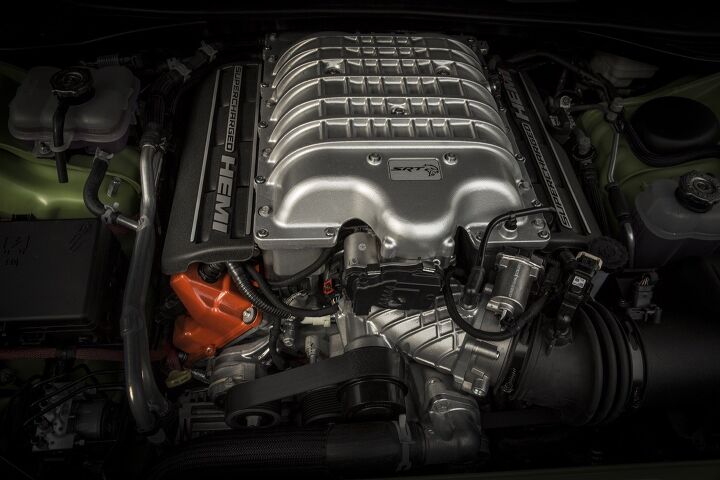
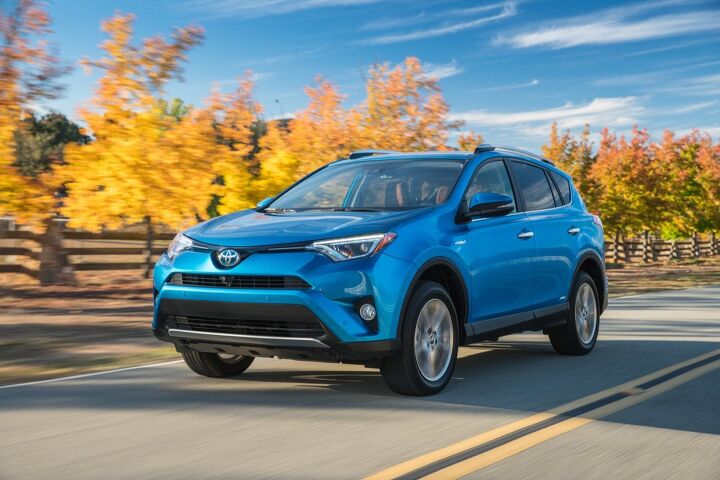




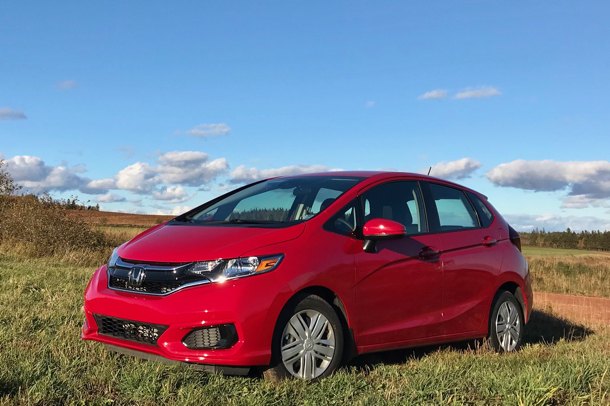

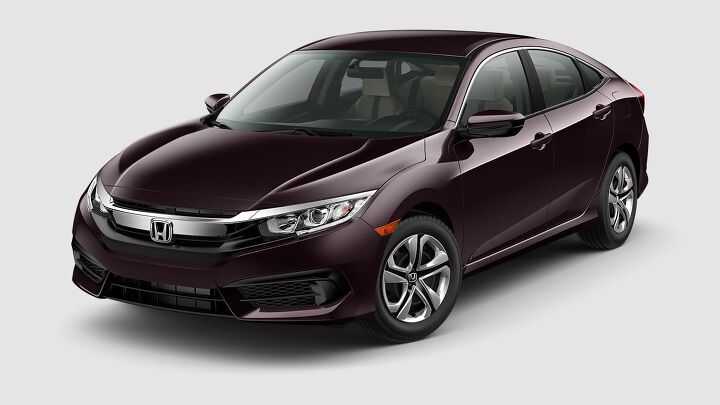


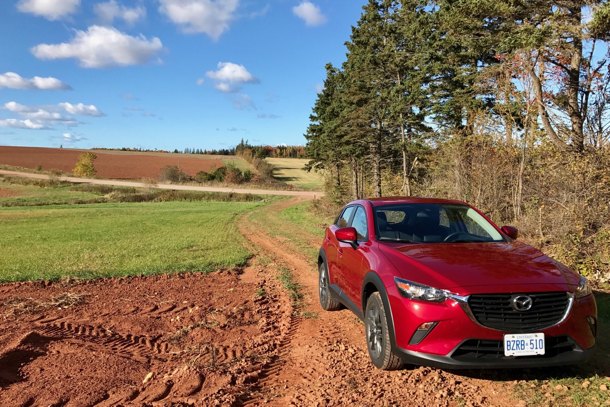


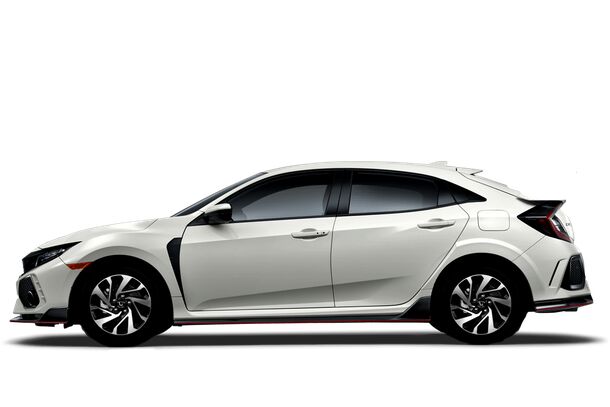

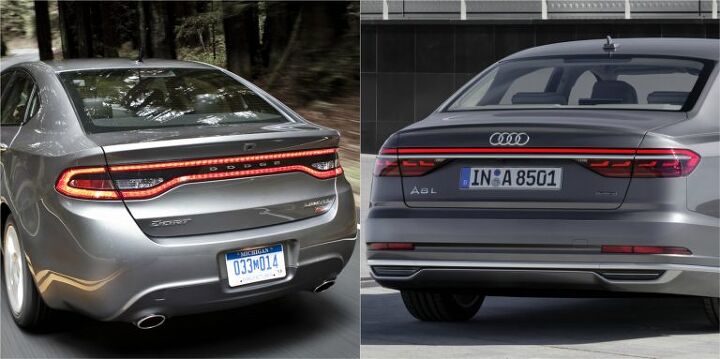
![Partial Next-generation Jeep Wrangler Engine Specs Leaked? [UPDATED]](https://cdn-fastly.thetruthaboutcars.com/media/2022/07/19/9194864/jeep-wrangler-jk-production-ends-friday-model-will-cheerfully-and-capably-dig-its.jpg?size=720x845&nocrop=1)
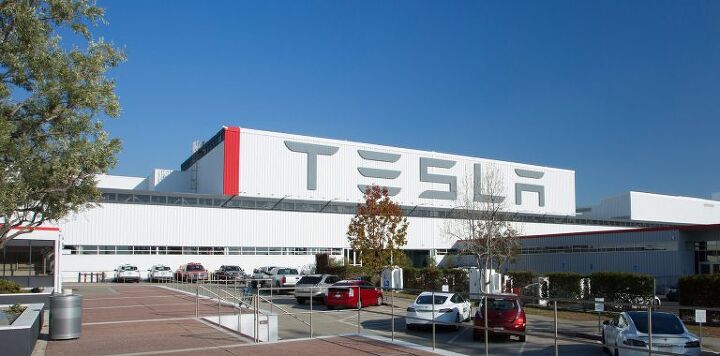

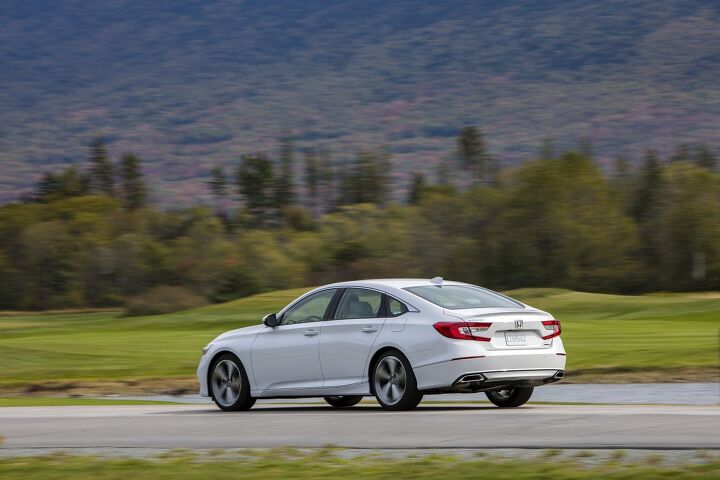
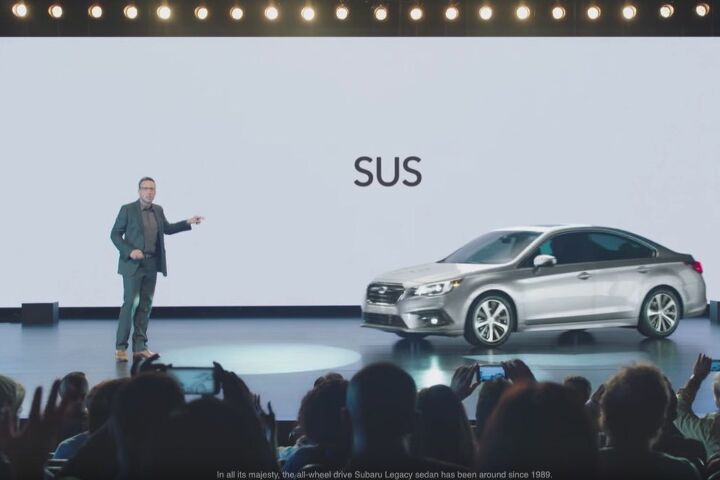
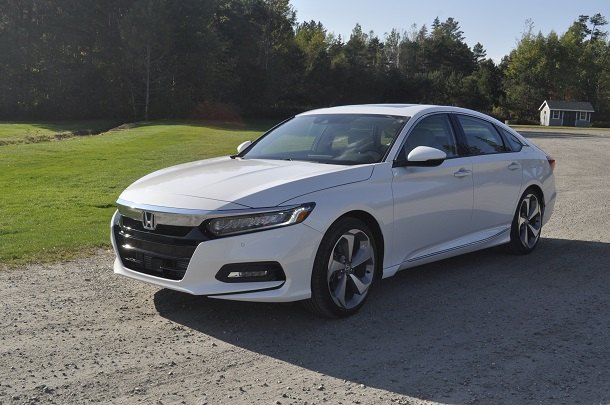
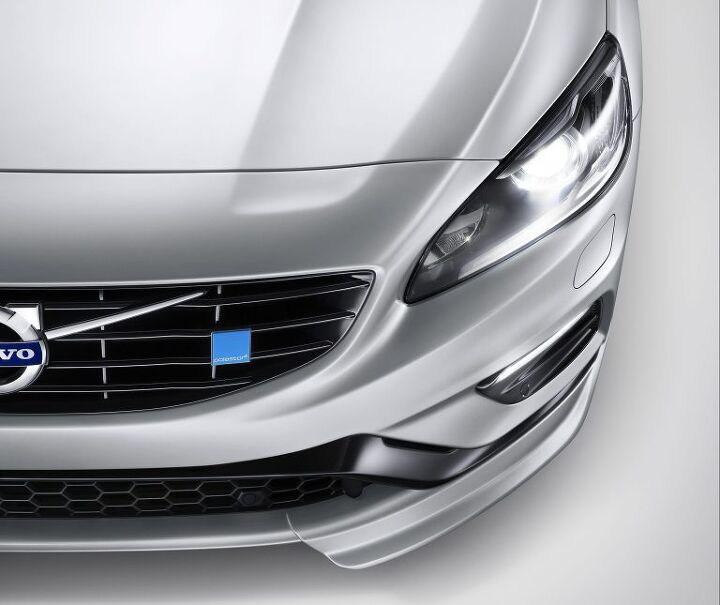

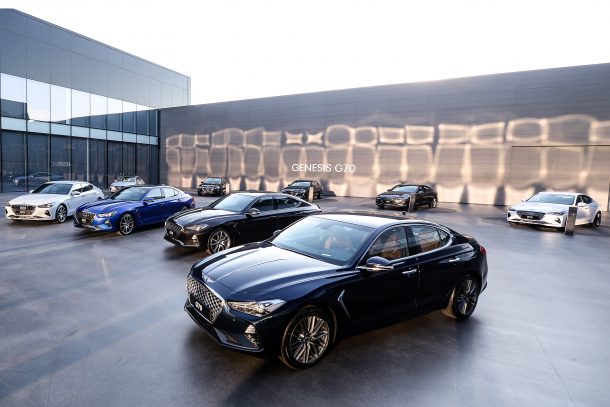

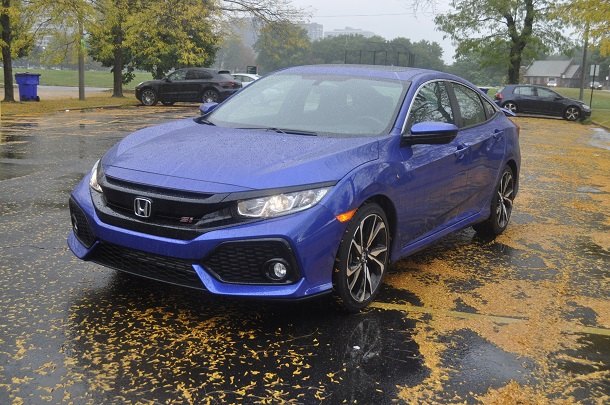


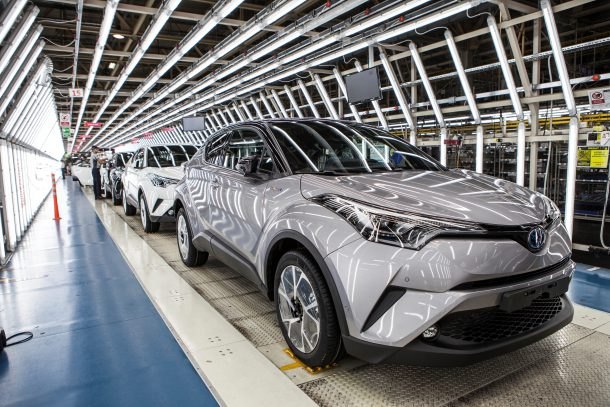




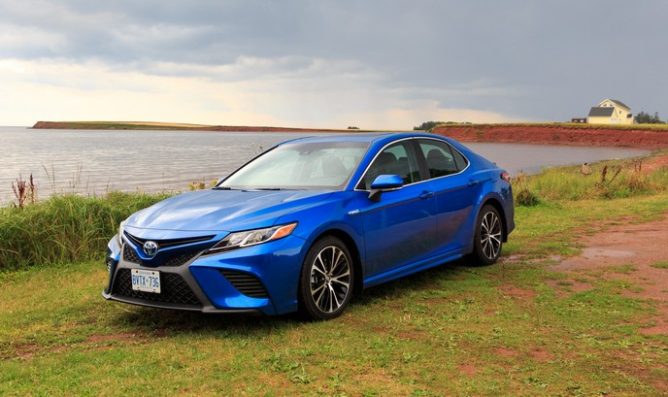


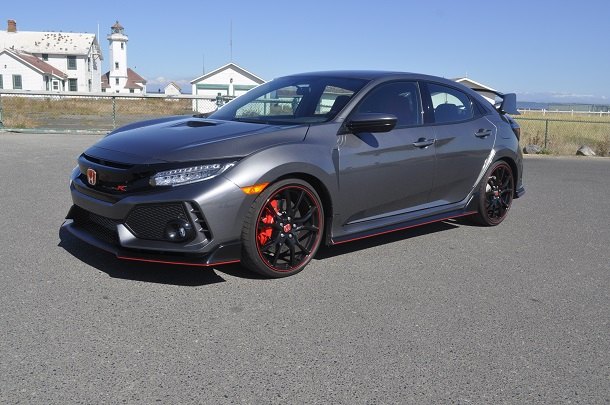

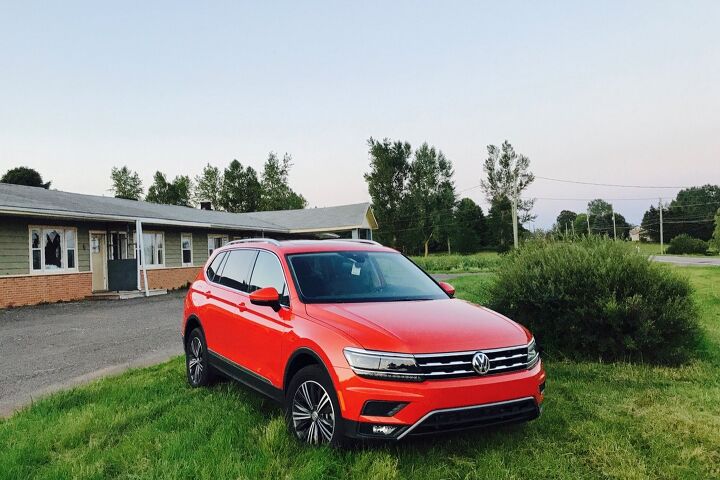

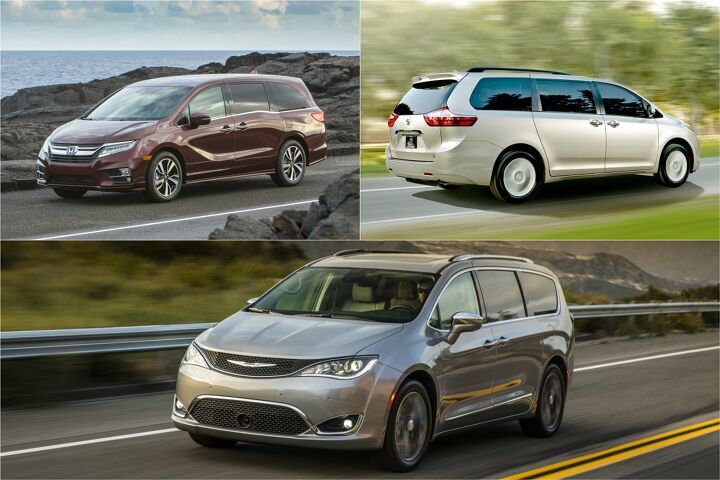



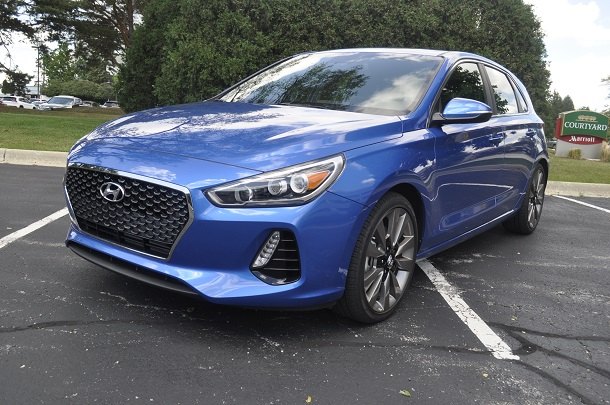





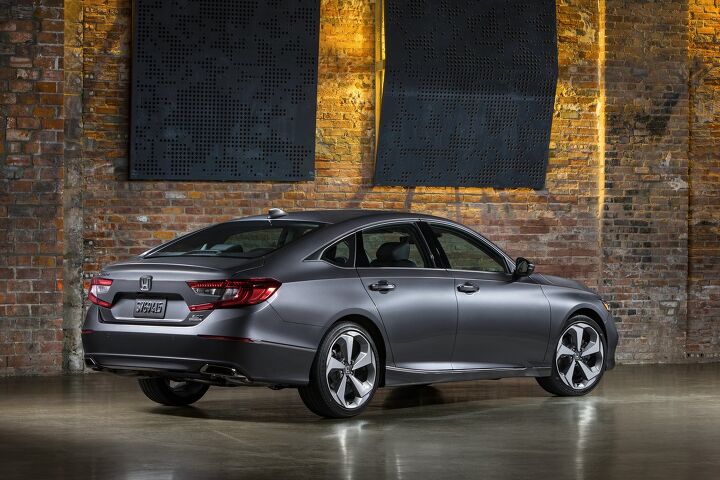

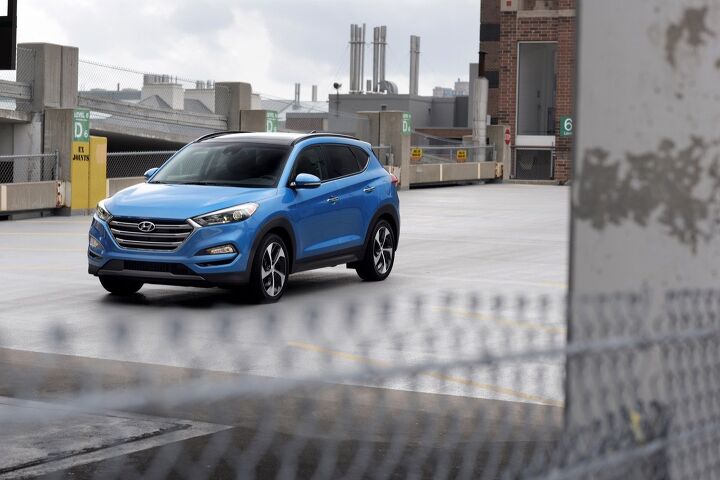
















Recent Comments